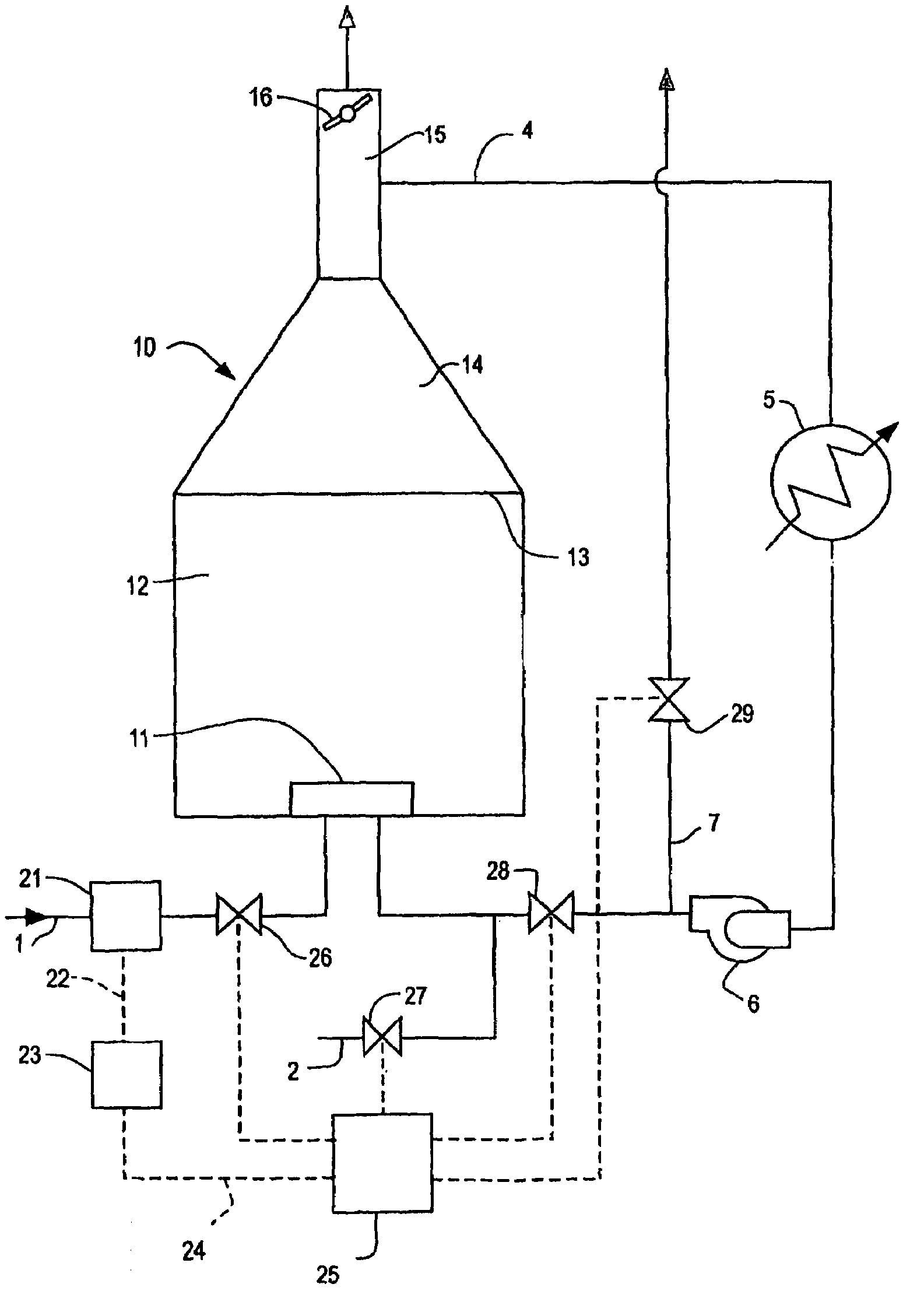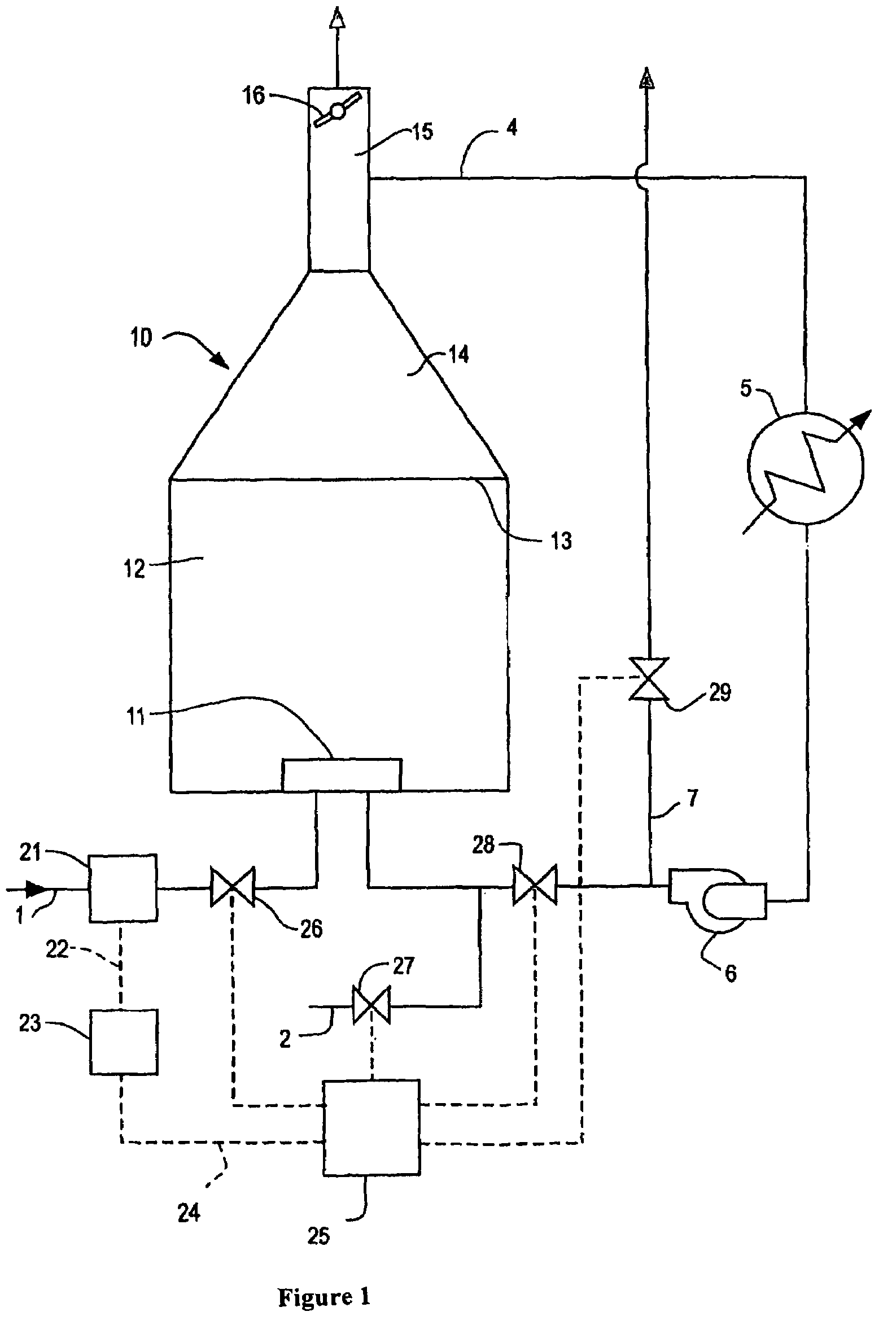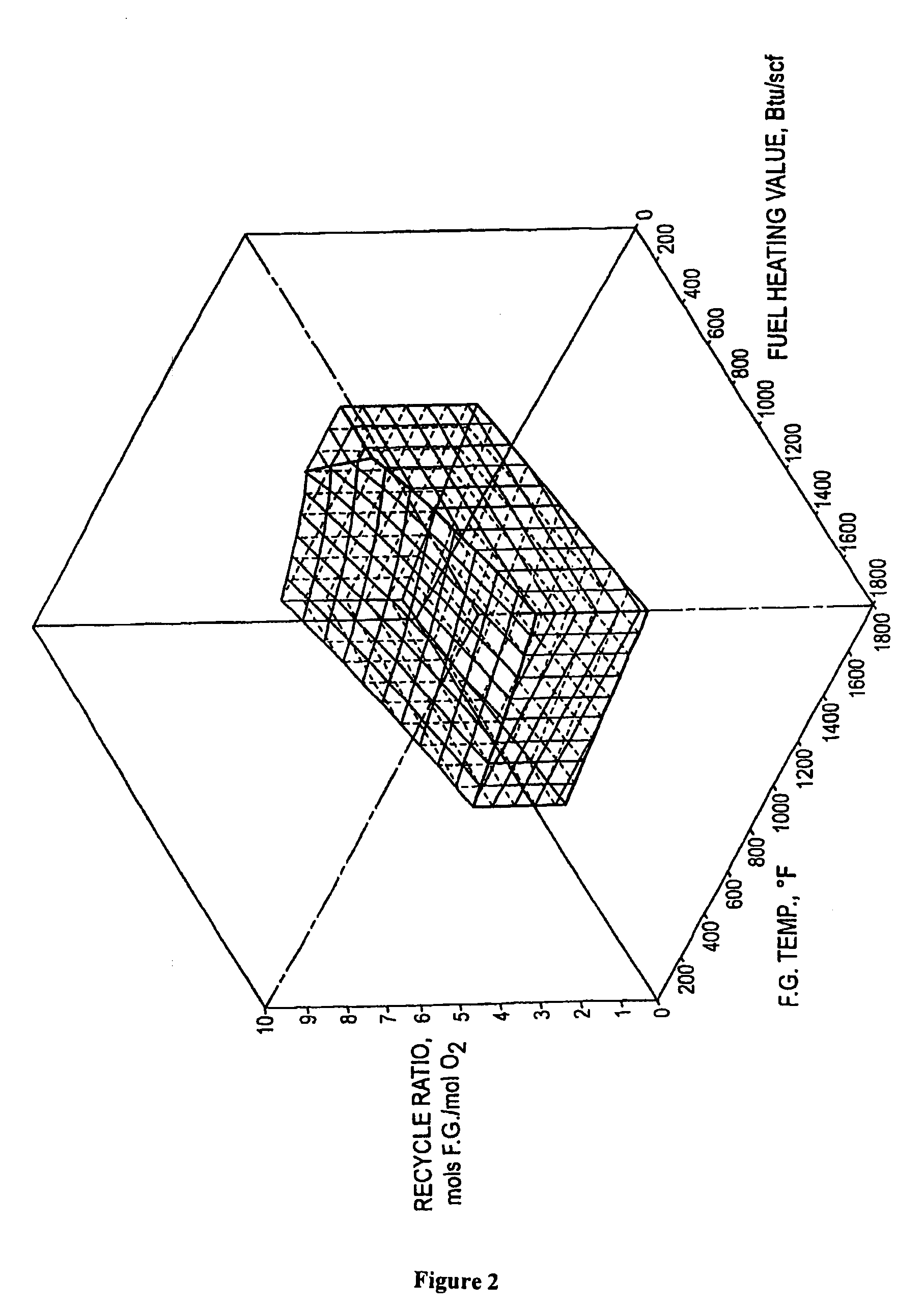Method for combusting fuel in a fired heater
a technology of combusting fuel and fired heaters, which is applied in the direction of combustion types, lighting and heating apparatus, incinerator apparatus, etc., can solve the problems of toxic gas, odorless toxic gas, and toxic gas, etc., and achieve the effect of reducing unnecessary consumption of oxygen and fuel, and substantial cost-savings
- Summary
- Abstract
- Description
- Claims
- Application Information
AI Technical Summary
Benefits of technology
Problems solved by technology
Method used
Image
Examples
example 1
[0063]This simulation is conducted in accordance with the mathematical representation, of the combustion regime of
[0064]4,500≥7554.8-933.72x+64.960x2+.47705y-.55680z-1579.2w≥2,500.
In this simulation, the heating values of the fuel range from 300 Btu / scf LHV to 900 Btu / scf LHV. An oxidizer with a mole fraction of 0.995 oxygen (99.5 percent oxygen) is injected into the combustion process over stoichiometric oxygen requirements so that the flue gas comprises about 3 mole percent oxygen. The flue gas recycle ratios range from 2.901 to 5.285 moles flue gas / mole of oxidizer. The recycled flue gas temperature ranges from 400° F. to 700° F. The exact combustion parameters and results for each test run are set forth in Table 1, wherein f represents a value within the combustion regime.
[0065]
TABLE 1O2 inFuelO2 inFlueFlueFlueHeatingExcessiveOxi-GasGasGasValueOxidizerdizer(Wet)Temp.RecycleRun(Btu / scf)FractFractFract° F.Ratiof1300.0598.995.03004003.56235002300.0598.995.03004004.120325033...
example 2
[0067]This simulation is conducted in accordance with the mathematical representation of the combustion regime of
[0068]4,500≥7554.8-933.72x+64.960x2+.47705y-.55680z-1579.2w≥2,500.
In this simulation, the heating value of the fuel is 700 Btu / scf LHV. An oxidizer comprising 99.5 mole percent oxygen (substantially pure oxygen) is injected into the combustion process over stoichiometric oxygen requirements so that the flue gas comprises about 3 mole percent oxygen. The flue gas is recycled into the combustion process at a rate of 1.0 mole flue gas / mole of oxidizer at a temperature of 700° F. The exact combustion parameters and results for the test run are set forth in Table 2, wherein f represents a value outside the combustion regime.
[0069]
TABLE 2O2 inFuelO2 inFlueFlueFlueHeatingExcessiveOxi-GasGasGasValueOxidizerdizer(Wet)Temp.RecycleRun(Btu / scf)FractFractFract° F.Ratiof1900.0466.995.03007001.04928
[0070]In this simulation, it is projected that premature deterioration of the bur...
PUM
 Login to View More
Login to View More Abstract
Description
Claims
Application Information
 Login to View More
Login to View More - R&D
- Intellectual Property
- Life Sciences
- Materials
- Tech Scout
- Unparalleled Data Quality
- Higher Quality Content
- 60% Fewer Hallucinations
Browse by: Latest US Patents, China's latest patents, Technical Efficacy Thesaurus, Application Domain, Technology Topic, Popular Technical Reports.
© 2025 PatSnap. All rights reserved.Legal|Privacy policy|Modern Slavery Act Transparency Statement|Sitemap|About US| Contact US: help@patsnap.com



